Let’s get to the point…
Needles are a textile conservator’s best friend. We stab them through wool, tunnel them through tapestry warps, and tenderly ply them through lace and silk. Needles are our partners in constructing ladders and herringbones, our tools for figure-eights, and our means of tacking down loose embroidery.
Archeological evidence suggests that needles have been in use since the Middle Stone Age, with the earliest known needle found in South Africa dating back 61,000 years. Sharpened bamboo, bone, wood, and ivory have all served as needles, and Native Americans even crafted them from the agave plant. In the 13th Century, the needle with an eye arrived in China, and when Columbus was roaming the ‘New World’ in 1496, Leonardo da Vinci made an apparatus to point needles. 350 years later, the Singer brothers invented the sewing machine (1845).
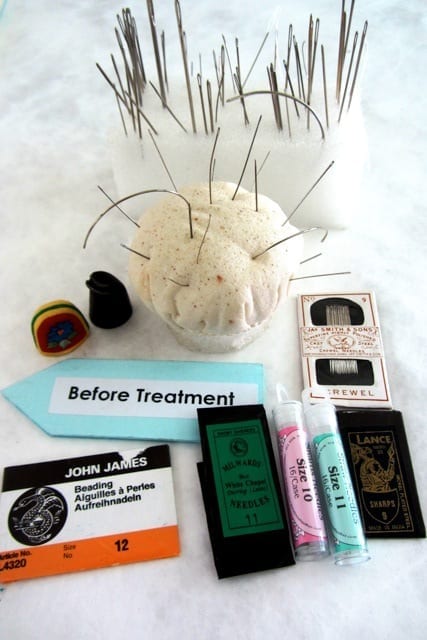 For every type of damage, cloth and repair task, there is a specific stitch requiring a specific needle. A No 12 is the smallest and is sometimes held with pincers. The tapestry needle is dull and has an eye large to accommodate wool yarn. A curved or surgeon’s needle is super sharp (so it can easily stitch through skin) and is a challenge to use. The beading needle is long and very thin, and there are straws, betweens, sharps, milliners… I could go on!
For every type of damage, cloth and repair task, there is a specific stitch requiring a specific needle. A No 12 is the smallest and is sometimes held with pincers. The tapestry needle is dull and has an eye large to accommodate wool yarn. A curved or surgeon’s needle is super sharp (so it can easily stitch through skin) and is a challenge to use. The beading needle is long and very thin, and there are straws, betweens, sharps, milliners… I could go on!
Everywhere I go I search for needles… good ones are so difficult to find. Needles made of platinum or those that are gold plated are preferred, as they resist corrosion. I’ve found some excellent vintage needles in Asian fabric markets in Europe and the UK, and excellent handmade needles can be found in Japan.
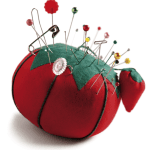 How do we store needles? Stuck into a pincushion, of course. The ubiquitous strawberry pincushion is a cleaning, polishing, and therapeutic utensil filled with emery, like the sandy board for filing fingernails. Emery is a combination of aluminum oxide and iron oxides, giving the needle a little sharpening and cleaning each time it’s stored – just like a proper pincushion should!
How do we store needles? Stuck into a pincushion, of course. The ubiquitous strawberry pincushion is a cleaning, polishing, and therapeutic utensil filled with emery, like the sandy board for filing fingernails. Emery is a combination of aluminum oxide and iron oxides, giving the needle a little sharpening and cleaning each time it’s stored – just like a proper pincushion should!
For a fabulous summer read – Elizabeth Wayland Barber, Women’s Work: The First 20,000 Years; Women, Cloth, and Society in Early Times (1995)
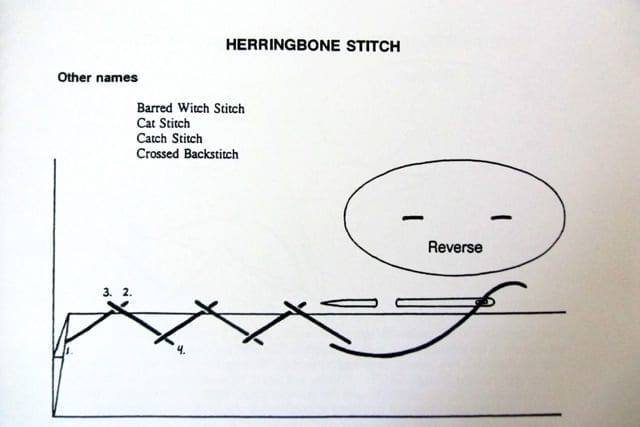
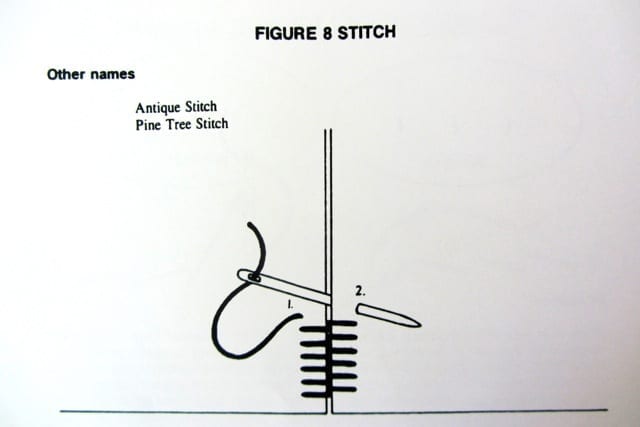
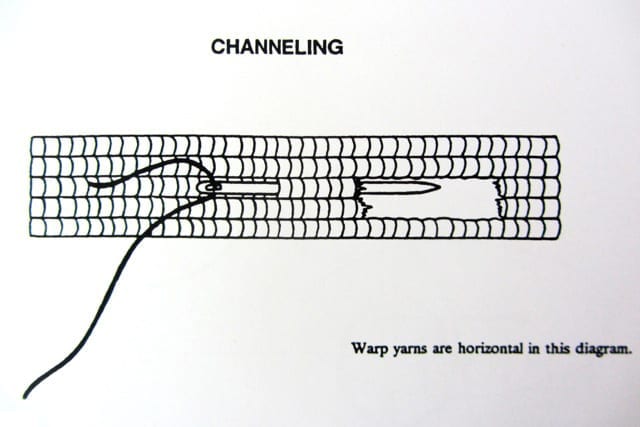
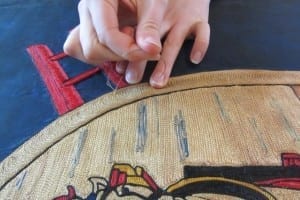
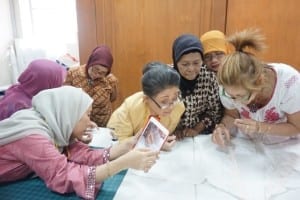

This simple description of the role and function of needles in conservation is essential knowledge for all conservators
This is really very interesting. I shall pass it on to the Indonesian Textile Museum and our National Conservation Centre. Is there somewhere that Indonesian conservators could be sent to learn about this sort of textile conservation? We have many people with the skills but not with conservation knowledge. Kind wishes, Tamalia Alisjahbana
Hello Tamalia, During my recent textile conservation workshop in Jakarta, at the Museum Tekstil, we covered many aspects of hand stitching for conservation treatments. Each person in the workshop made 2 stitching samplers, learning which stitch to use for which kind of repair. Selecting which stitch, or to stitch at all – this is conservation knowledge. I realize that there is a great need for and interest in having textile and art conservation training in Indonesia. I met lots of people who have all had little bits of training, but it would be wonderful to have a real degree and training program, and one that also prepared general museum staff for preservation, preventative work, management. This is a serious undertaking and would require good funding, university sponsorship, and museum collaboration. In the short term, we need to try and build museum staffs, and set up short trainings in situ suited to particular collections, sites and skill levels. Thank you for your comment. Julia
Love this Julia !
Waiting for another knowlegde sharing story from you.
Interesting. Never knew that strawberry pin cushions were filled with emery! And now I shall look for good needles for you. Kashmiris are reknowned for their darning skills. They are called Rafugars. Next time I have a chance, I shall check out their needles!